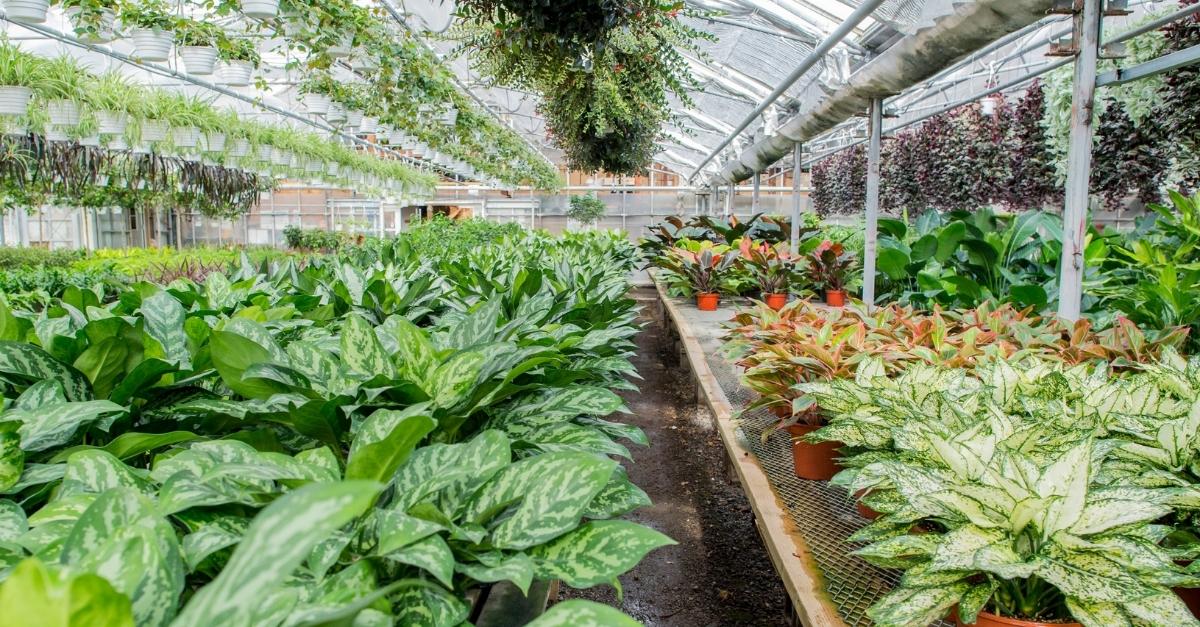Looking for a natural way to increase oxygen indoors?
For those suffering from chronic obstructive pulmonary disease (COPD), the desire for more oxygen can be demanding.
Although options are available for increasing oxygen through means such as oxygenators and air purifiers, there are a variety of natural alternatives for increasing air quality that is beneficial for both body and mind.
The Lung Institute believes the home should foster an environment of good health and well-being, and with your health in mind, we’ve compiled a list of the top 5 plants for increasing oxygen indoors.
5. Areca Palm
As with all plants, the Areca Palm is biologically engineered to take in carbon dioxide and release oxygen. However, what sets the Areca Palm apart is its ability also to purify the environment it’s placed in by removing dangerous chemicals such as formaldehyde, xylene, and toluene.
Recommendation & Care:
The Areca Palm does well in filtered light and needs to be watered often. For one person, four shoulder-high plants should suffice.
Best Placement:
The Living Room
4. Snake Plant a.k.a. Mother-In-Law’s Tongue
Considered highly efficient in oxygen production, the Snake Plant, otherwise known as the Mother-In-Law’s Tongue, is unique for its nighttime oxygen production and ability to purify air through the removal of benzene formaldehyde, trichloroethylene, xylene, and toluene.
Recommendation & Care:
The Snake Plant does well in window light and needs to be watered weekly.
For one person, six to eight waist-level plants are recommended. In an air-sealed room, these plants can produce enough oxygen to breathe normally.
Best Placement:
The Bedroom
3. Money Plant
Featured by NASA, the Money Plant is renowned for its ability to remove chemicals and other pollutants from the air, specifically benzene, formaldehyde, xylene, and toluene.
However, despite the benefit of its high purification rate, this plant is toxic to cats, dogs and small children if its leaves are ingested.
Recommendation & Care:
The Money Plant prefers indirect light and must be watered every week. For one person, three 18-inch plants are recommended.
Best Placement:
Any room but keep out of reach of pets or small children.
2. Gerbera Daisy (Gerbera Jamesonii)
Arguably the prettiest entry on the list, the Gerbera Daisy is often used as a decorative element in gardening.
However, the Gerbera Daisy is also distinct for its ability to produce high oxygen levels at night while removing harmful chemicals, such as benzene and trichloroethylene.
Beneficial for those suffering from sleep apnea and breathing disorders, keep this one on the nightstand for better sleep.
Recommendation & Care:
The Gerbera Daisy prefers bright sunlight during the summer, spring, and fall, and indirect light during the winter. It needs to be watered regularly, with the soil being kept moist.
Due to the decorative nature of the flower, the amount of recommended flower pots is up to the discretion of the planter.
Best Placement:
The Bedroom
1. Chinese Evergreens
The Chinese Evergreen is one of the most common household plants, and for a good reason. This plant emits a high oxygen content while purifying indoor spaces of harmful chemicals such as benzene, formaldehyde, and other toxins.
As its name suggests, it is quite popular in China, specifically for its high efficiency in removing harmful pollutants from the air.
Recommendation & Care:
The Chinese Evergreen does well in full shade and only needs to be watered occasionally with a focus on keeping the soil moist. The number of plants kept is at the owner’s discretion.
Best Placement:
The Living Room
What Else Can I Do To Breathe Easier?
Although keeping oxygen-generating plants, such as our top 5 plants for increasing oxygen, may increase the quality of life for those suffering from COPD, they are not a form of treatment.
And though indoor plants may ease the symptoms of COPD, they will be ineffective when outside the home or workplace.
Currently, COPD has no cure; however, discoveries are being made every day.
As the scientific community continues to put their best minds to the task of solving the problems and complications of the human body, the Lung Institute will continue to bring these advancements to the public to better the quality of life.
If you’re looking to make a profound change in your life or the life of someone you love, the time is now.

Christine Kingsley, APRN is the Health and Wellness Director at the Lung Institute where she focuses on providing helpful online resources for people looking for information on various lung diseases, breathing exercises, and healthy lifestyle choices. She advocates for holistic care that involves working with your doctor to explore all options including traditional and alternative care while focusing on diet and exercise as proactive measures.









